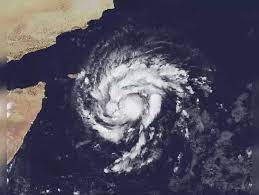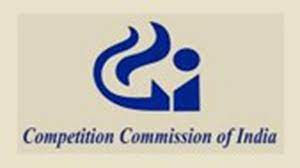Today’s Current Affairs: 24th Oct 2023 for UPSC IAS exams, State PSC exams, SSC CGL, State SSC, RRB, Railways, Banking Exam & IBPS, etc
Table of Contents
FIDE World Junior Rapid Chess Championship 2023:

The Prime Minister recently congratulated Raunak Sadhwani on his victory at the FIDE World Junior Rapid Chess Championship 2023
- The FIDE World Cup, established in 2000 by the International Chess Federation (FIDE), encompasses various iterations.
- The format includes 7 rounds of “mini-matches” with 2 games each, followed by rapid and blitz tiebreaks if needed.
- The final consists of 4 games before tiebreaks.
FIDE:
- The International Chess Federation or World Chess Federation, commonly referred to by FIDE, is an international organization (HQ: Lausanne (Switzerland); Founded 1924) that connects the various national chess federations and acts as the governing body of international chess competition. It was
- FIDE was constituted as a non-governmental institution.
- It is the governing body of the sport of chess and regulates all international chess competitions.
- It was recognized by the International Olympic Committee as a Global Sporting Organization in 1999.
- It has 199 countries as affiliate members (including India), in the form of National Chess Federations
Green Energy Corridor (GEC) Phase-II:

The Cabinet Committee on Economic Affairs, has approved the Green Energy Corridor (GEC) Phase-II – Inter-State Transmission System (ISTS) for a 13 GW Renewable Energy Project in Ladakh.
- Green Energy Corridor (GEC) is an initiative aimed at integrating and evacuating renewable energy into India’s power grid, promoting sustainable growth, and enhancing energy security. It has two phases.
- Power Grid Corporation of India Limited (POWERGRID) is Implementing Agency
- GEC-1 Implementation Already underway in Gujarat, Andhra Pradesh, Karnataka, Himachal Pradesh, Maharashtra, Madhya Pradesh, Tamil Nadu, and Rajasthan, aiming to integrate and evacuate 24GW of Renewable Energy (RE).
- GEC-2 Implementation Planned for seven states: Gujarat, Himachal Pradesh, Karnataka, Kerala, Rajasthan, Tamil Nadu, and Uttar Pradesh.
- Targeting grid integration and power evacuation of around 20 GW of RE projects over five years (FY 2021-22 to 2025-26).
- Objectives is to Synchronize renewable energy (wind and solar) with conventional power sources.
Coral Reef Fossils In Ladakh:

Geologists have made a remarkable discovery of coral reef fossils at an elevation of 18,000 feet above sea level in the Burtse region, Eastern Ladakh Himalayas.
- These fossils reveal the existence of ancient coral colonies and provide insights into a previously unknown geological past of the Burtse region, suggesting the presence of a diverse marine ecosystem.
- The findings support the idea that the Himalayas emerged when continental plates were thrust out of the Tethys Sea about 40 million years ago.
- The discovery of coral reef fossils in Ladakh is significant because it indicates that this region, now a high-altitude desert, was once submerged under a vast ocean.
- This finding offers insights into Ladakh’s geological history, the impact of tectonic activity, and ancient climate conditions.
Coral reefs:
- They are underwater ecosystems composed of coral colonies held together by calcium carbonate, which are vital for marine ecology.
Cyclone Tej:

Cyclone Tej, initially forming over the Arabian Sea, has intensified into an extremely severe cyclonic storm, with projections indicating a northwestward trajectory and an expected landfall near Al Ghaidah (Yemen).
- The name ‘Tej,’ which means ‘speed’ in Hindi, was chosen by India.
- A yellow alert has been issued by India Meteorological Department (IMD) for eight districts in Kerala, warning of heavy rains.
- IMD, established in 1875, is an agency of the Ministry of Earth Sciences.
- IMD uses colour- coded weather warning to alert people ahead of severe or hazardous weather which has the potential to cause damage, widespread disruption or danger to life.
Gujarat’s Dhordo : Best Tourism Village

Dhordo has been conferred the prestigious title of Best Tourism Village by the United Nations World Tourism Organisation (UNWTO).
- Dhordo received this title at the Best Tourism Village – 2023 award ceremony organized by the UNWTO at Samarkand in Uzbekistan.
- The village has become a popular tourist destination due to its rich cultural heritage, handicrafts, and the famous Rann Utsav.
- The UNWTO awards the title of “Best Tourism Village” to villages that meet certain criteria.
- The criteria include promoting sustainable tourism, preserving local culture and heritage, providing a safe and welcoming environment for tourists, and offering unique experiences to visitors.
Cervical Cancer Cases : Lancet Study

A recent study published in The Lancet Regional Health Southeast Asia has revealed that there is a significant regional disparity in the survival rates of cervical cancer patients across India.
Key Findings Of the Study:
- About 52% of cervical cancer cases diagnosed between 2012 and 2015 survived.
- Among those that participated in the study, the Ahmedabad urban registry demonstrated the highest survival rate at 61.5%, followed by Thiruvananthapuram with 58.8% and Kollam at 56.1%.
- In contrast, Tripura reported a survival rate of 31.6%.
- The study noted that factors such as access to diagnostic services, effective treatment, distance from clinical care facilities, travel costs, co-morbidities, and poverty contributed to survival rates.
SDG Summit 2023:

The Global leaders expressed apprehension regarding the slow progress in achieving Sustainable Development Goals (SDGs) during the SDG Summit in New York, the US.
Key Highlights of the SDG Summit 2023:
- The annual SDG funding gap, which was USD 2.5 trillion before the pandemic, has now increased to an estimated USD 4.2 trillion, emphasizing the urgent need for substantial investment in achieving the SDGs.
- The leaders stressed the importance of the Addis Ababa Action Agenda (AAAA) in achieving the 2030 Agenda, emphasizing efficient use of all financial flows, public and private, for sustainable development.
- They called for swift implementation of the UN Secretary-General’s proposal for an SDG stimulus, a significant increase in funding by USD 500 billion annually.
- The AAAA is a global framework for financing sustainable development. It aims to discuss and agree upon ways to mobilize resources and provide the necessary financing for the implementation of the 2030 Agenda for Sustainable Development and its 17 SDGs.
- To strengthen SDG implementation, the leaders urged multilateral actions and coordination by all creditors, emphasizing scaling up Debt Swaps for SDGs, including climate and nature-related debt swaps.
- Debt swaps provide opportunities for raising capital in low-income countries to address environmental and other policy challenges and support green growth.
- The declaration acknowledged that the Covid-19 Pandemic has disproportionately impacted the SDGs, particularly in the world’s poorest and most vulnerable nations. It highlighted the need for an emergency course correction to accelerate progress in achieving the SDGs.
- Leaders recommitted to fully implementing the Sendai Framework for Disaster Risk Reduction and pledged to step up efforts to combat climate change.
- They also committed to operationalizing new finance arrangements to respond to loss and damage, aligning with climate goals.
- The leaders expressed deep concern about the state of SDGs at the halfway point of their implementation, highlighting challenges such as poverty, forced relocations, disparities, and the adverse impacts of climate change.
- Despite these challenges, they recommitted to fully implementing the 2030 Agenda and 17 SDGs to protect the rights and well-being of all for a sustainable world.
Montreux Convention:

The Turkish Ministry of National Defence recently announced that it will impose restrictions on the passage of warships belonging to countries not bordering the Black Sea within the framework of the Montreux Convention.
- Montreux Convention is an agreement concerning the Dardanelles Strait and the Bosporus Strait, also known as the Turkish straits or the Black Sea straits.
- The Turkish straits are the only maritime passage between the Black Sea and the Mediterranean Sea.
- According to the 1936 Montreux Convention Regarding the Regime of the Straits, often referred to simply as the Montreux Convention, Turkey has control over the Turkish Straits.
- In the event of a war, the pact gives Turkey the right to regulate the transit of naval warships and to block the straits for warships belonging to the countries involved in the conflict.
- Merchant vessels enjoy freedom of passage through the Turkish Straits, while passages of vessels of war are subject to some restrictions that vary depending on whether these vessels belong to the Black Sea littoral States or not.
- Besides some general restrictions applicable to all, vessels of war belonging to non-littoral States are subject to specific restrictions, such as those regarding maximum aggregate tonnage and duration of stay in the Black Sea.
Leniency Plus Norms : CCI

The Competition Commission of India (CCI) has released a draft of revised lesser penalty regulations that provides for introduction of a “leniency plus” programme
- Leniency plus’ norms is a new cartel detecting tool and sheds light on how the competition watchdog intends to operationalize it.
- The “Leniency Plus” regime was part of the Competition (Amendment) Act 2023
- Leniency Plus is a proactive antitrust enforcement strategy aimed at attracting leniency applications by encouraging companies already under investigation for one cartel to report other cartels unknown to the competition regulator.
- The benefit that would entail such disclosure is a reduction of penalty in the first cartel to the person disclosing the information, without prejudice to the company obtaining lesser penalty regarding the newly disclosed cartel.
- This “leniency plus” regime is already recognised in jurisdictions like the UK, US, Singapore, and Brazil.
Competition Commission of India:
- It is a statutory body of the Government of India, was established in March 2009 under the Competition Act, 2002.
- The goal of CCI is to create and sustain fair competition in the economy that will provide a ‘level playing field’ to the producers and make the markets work for the welfare of consumers.
- The priority of the Commission is to eliminate practices having adverse effects on competition, promote and sustain competition, protect the interests of consumers, and ensure freedom of trade in the markets of India.
Infantile Hypophosphatasia:

A family of children diagnosed with the rarest of diseases — Infantile Hypophosphatasia struggling to get these genetic disorders included under the Centre’s National Policy for Rare Diseases (NPRD).
- Infantile Hypophosphatasia is a rare genetic disease in which the patient’s bones and teeth demineralise, making her fragile and prone to fractures.
- It may have no noticeable abnormalities at birth, but complications become apparent within the first six months of life.
- The initial problem may be the baby’s failure to gain weight and grow as expected, referred to as “failure to thrive.”
- Sometimes the skull bones fuse, called craniosynostosis, which can lead to a deformed head (brachycephaly).
- Affected infants have softened, weakened, and deformed bones consistent with rickets.
- Rickets is a general term for complications due to defective skeletal mineralization during growth with softening of bone and characteristic bowing deformities.
- It is caused by mutations in the ALPL gene.
- This is the only gene that causes HPP. Genes provide instructions for making proteins that have an important function in the body.
- When a mutation occurs, the protein may be faulty, inefficient, or absent, as in HPP.
Little Ice Age (LIA) : Study

A recent study showed the signature of moist conditions during the Little Ice Age (LIA) from the Western Ghats, India.
- Little Ice Age (LIA) was one of the coldest periods of the past 10,000 years, a period of cooling that was particularly pronounced in the North Atlantic region.
Findings of the study:
- It showed significant variations in rainfall patterns during that age, challenging the conventional notion of a uniformly cold and dry climate with reduced monsoon rainfall during the LIA.
- It suggested that northward movement of the Inter Tropical Convergence Zone (ITCZ), positive temperature anomalies, increased sunspot numbers, and high solar activity could be driving climate change and increased South West Mansoon.
- They attributed the weakest phase of the Indian Summer Monsoon (ISM) across the Indian subcontinent during the LIA, in general, to the southward shift of the ITCZ, resulting from increased northward energy flux across the equator during a cold northern hemisphere.
- The high-resolution palaeoclimatic records generated in the present study could be helpful in developing paleoclimatic models for future climatic predictions and also for scientifically sound policy planning.
- Knowledge and understanding of climate change and Indian Summer Monsoon (ISM) variability during the Holocene could be of immense interest to strengthen the understanding of the present ISM-influenced climatic conditions, as well as of possible future climatic trends and projections.




